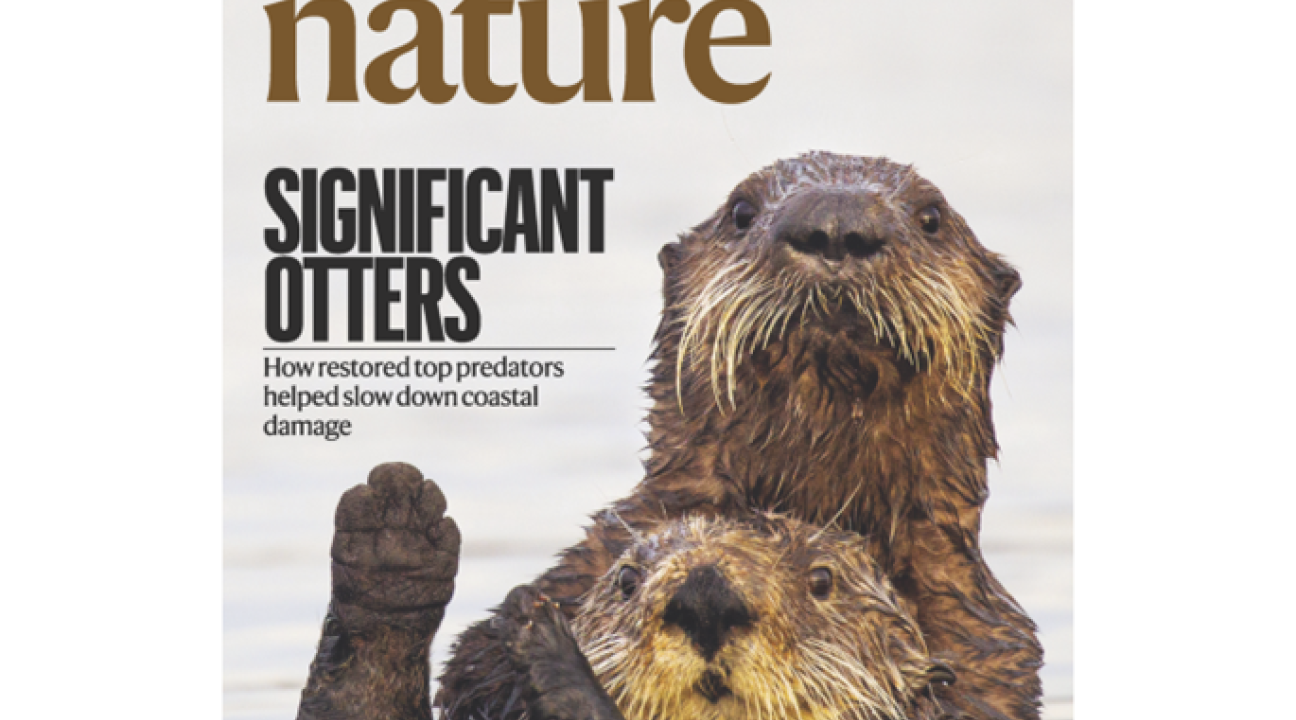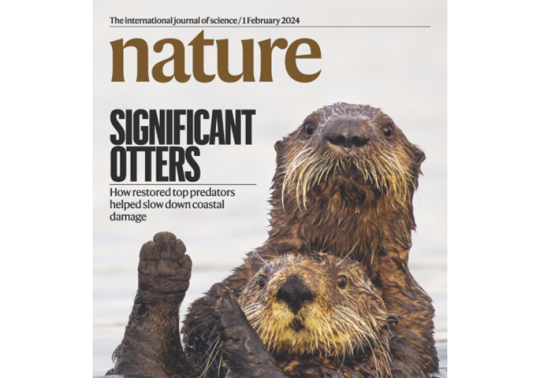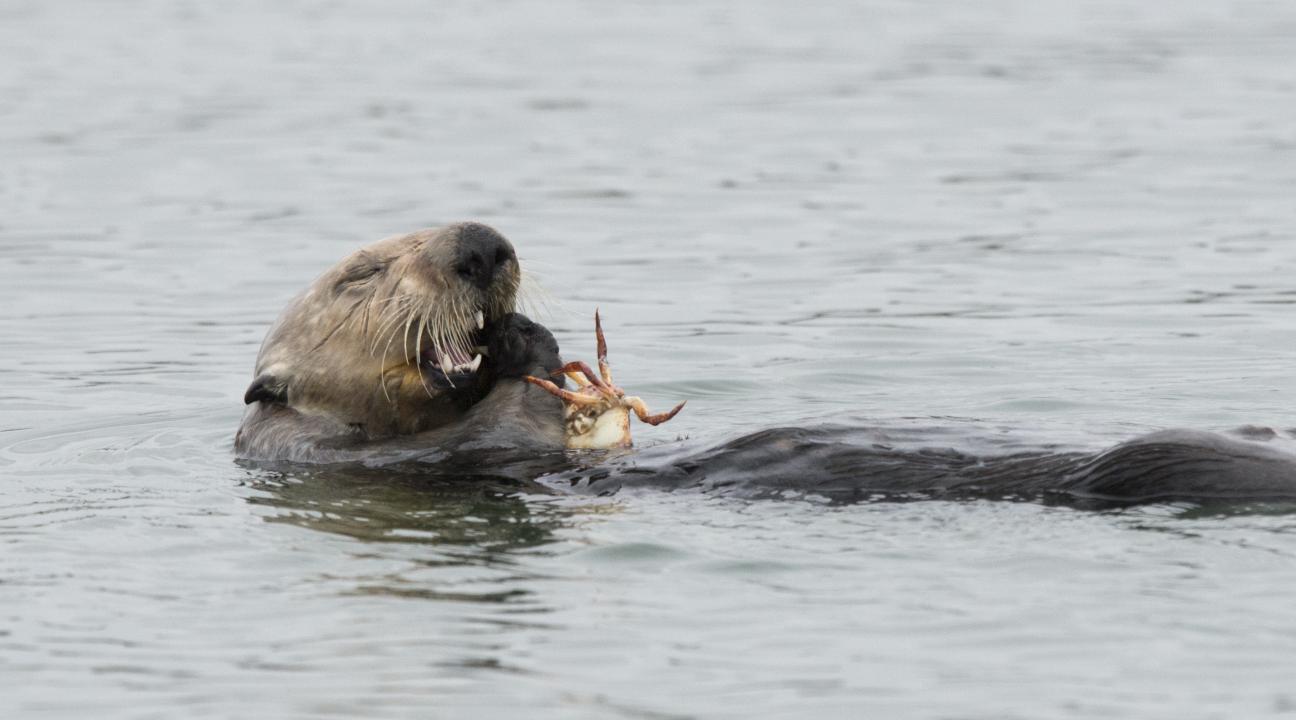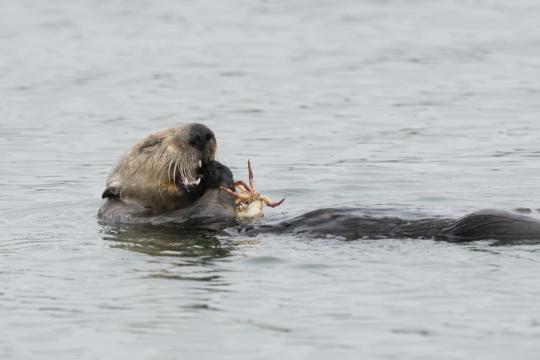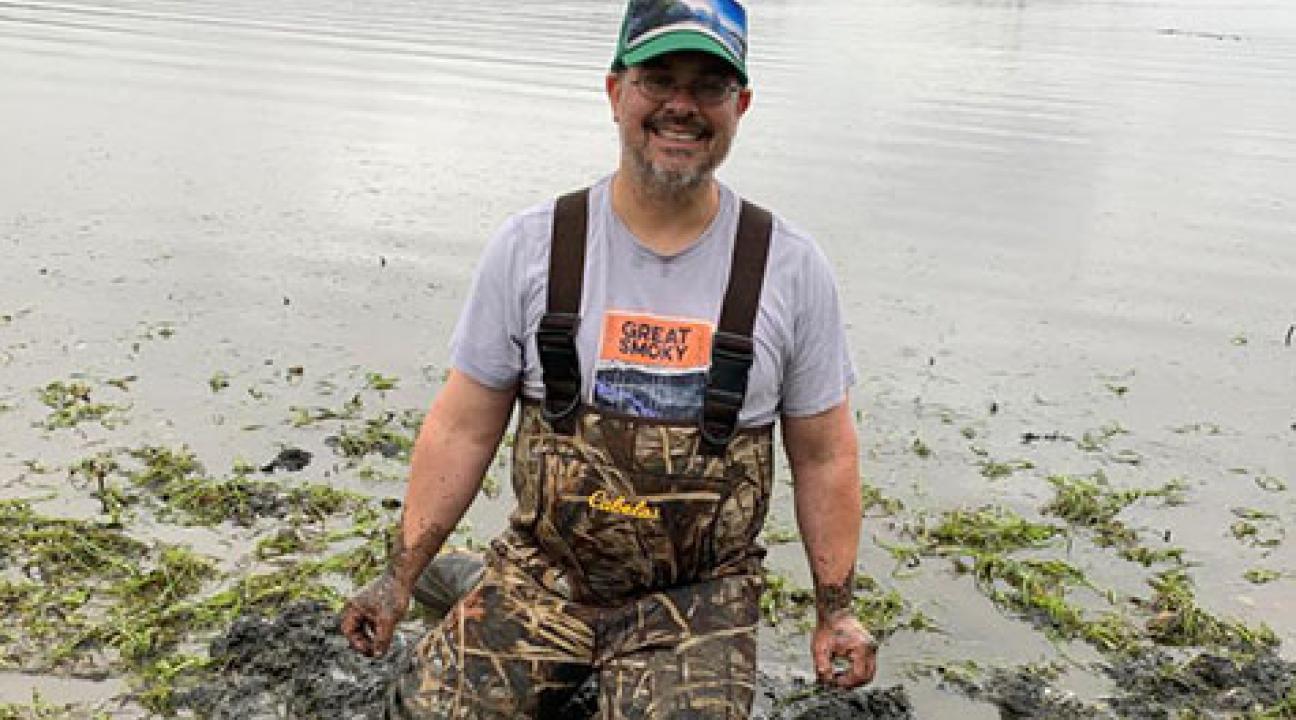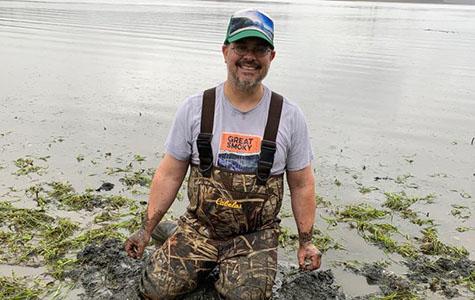“Significant Otters” - Nature cover article features SSU Professor Brent Hughes’ research
Sonoma State University biology professor Brent Hughes' research on sea otters and their role in protecting a California salt marsh is the cover article of Nature journal’s February 1 issue, called “Significant Otters.”
Against all odds, the biophysical features essential for making the Elkhorn Slough estuary a resilient coastal ecosystem are on the mend — in large part, the study appearing in Nature suggests, because of the sea otters’ insatiable appetite for plant-eating marsh crabs.
“When thinking about reintroducing sea otters outside their current range, salt marshes could be a very effective and affordable new tool for our conservation toolkit, benefitting both the sea otter and salt marsh,” lead author Brent Hughes – an associate professor of biology at Sonoma State – said of the study conducted over the course of a decade at Elkhorn Slough.
Experiments combined with observations collected on the ground and by aerial photography confirmed that at sites with large populations of sea otters, erosion of salt marshes had slowed to a halt by the study’s end. Some marshes were even expanding.
“It would cost tens of millions of dollars for humans to rebuild these creek banks and restore these marshes. The sea otters are stabilizing them for free in exchange for an all-you-can-eat crab feast,” said Brian Silliman, senior author of the study and Rachel Carson Distinguished Professor of Marine Conservation Biology at Duke University’s Nicholas School of the Environment.
Elkhorn Slough, like many other West Coast estuaries, was once an important foraging and nursery habitat for sea otters. To stay warm in frigid Pacific Ocean waters, adult otters need to eat the equivalent of about 25% of their body weight every day, or around 20 to 25 pounds of food. Crabs are one of their favorite meals. But after fur traders hunted the local otter population nearly to extinction, Elkhorn Slough’s crabs were left without sea otter predators for over a century, allowing their populations to explode.
“Crabs eat salt marsh roots, dig into salt marsh soil, and over time can cause a salt marsh to erode and collapse. This had been happening at Elkhorn Slough for decades until otters were reintroduced in the mid-1980s,” Hughes said.
“But after a few decades, in areas the otters had recolonized, marshes and creek banks were becoming more stable again despite rising sea levels, increased water flow from inland sources, and greater pollution,” he added.
Hughes and Silliman conducted the new study with colleagues from Sonoma State University; the University of California, Santa Cruz; the University of California, Santa Barbara; Nhydra Ecological Research; U.S. Geological Survey; Fisheries and Oceans Canada; Simon Fraser University; California Department of Water Resources; Monterey Bay Aquarium; and the University of Florida.
The study also included a critical component of research, done by Hughes Lab graduate student Madeline Sanchez, that involved remote sensing of sea otters near experimental cages. Sanchez, who graduated from Sonoma State with her master of science degree, is now a research associate at the San Diego Zoo Wildlife Alliance.
“Madeline’s research was important to our larger study because it verified that sea otters were not interfering with cages meant to keep them out, while also determining that other predators, such as raccoons, were not influencing our results, “Hughes said.
“Our results show that recovery of top predators can add stability to a collapsing ecosystem," Hughes said. “Salt marsh ecosystems like this are critical to fisheries, biodiversity, carbon sequestration, and shoreline protection.”
“The study, which draws on field experiments, modeling and before-and-after measurements, underscores the far-reaching benefits that can cascade through an ecosystem when a top predator is reintroduced,” Silliman added.
“It begs the question: In how many other ecosystems worldwide could the reintroduction of a former top predator yield similar benefits?” he said.
Funding came from the the David H. Smith Research Conservation Fellowship and the Cedar Foundation to Hughes and Silliman; National Science Foundation CAREER grants to Silliman and Angelini; and from the Rebecca and Steve Sooy Fellowship in Marine Mammals to Hughes and Beheshti, the Stolarz Foundation (Silliman), and the Lenfest Ocean Program (Silliman).
An animation depicting the study, produced by Sarah Engelhard, is on the Hughes Lab YouTube channel.


